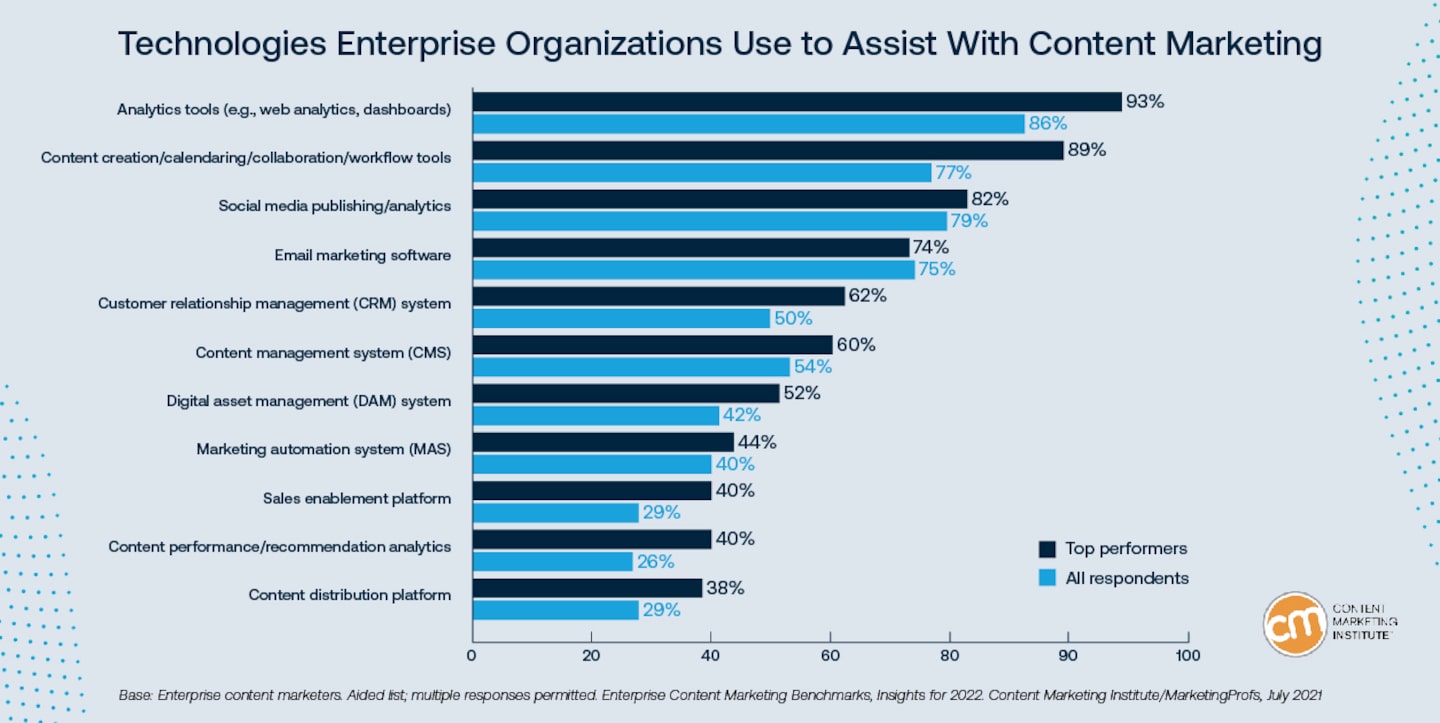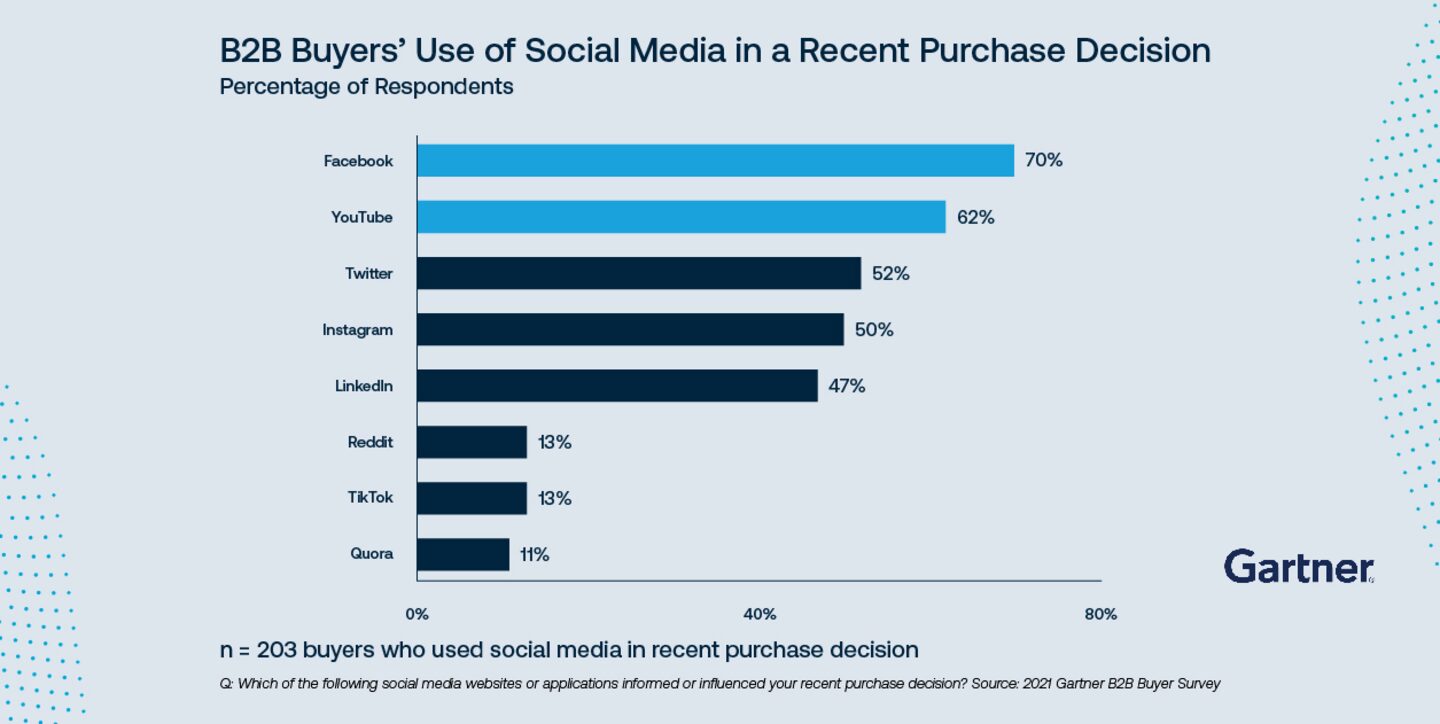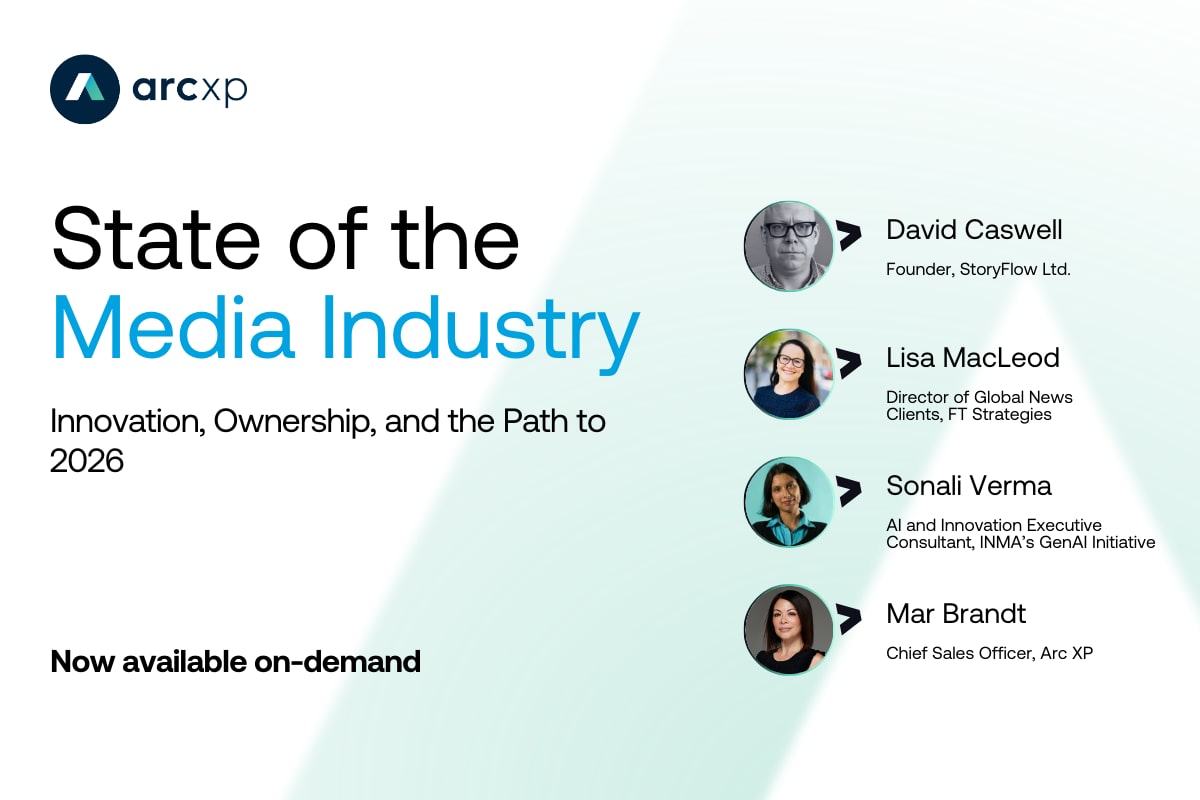Choosing the right content marketing technologies

Welcome to part three of our series on building a successful content marketing program. In part one we introduced the first of the three components of a success content operations program, the content operations plan. In part two we focused on the people who make the magic happen, your content marketing team.
In this final installment, we highlight the technologies used by high-performing organizations who are seeing success from their content marketing programs.
The essentials
Having the right technologies in place not only ensures that your content marketing program runs as planned but does so efficiently and with cohesion across channels. The Content Marketing Institute has identified the key tools used by more than half of B2B marketers to support their content marketing efforts, and particularly by those that reported a high level of content marketing success. Here we explore five of them.

1) Analytics Tools
Data serves as the backbone to measuring your content performance and the value your team’s efforts deliver to the organization, so it should be no surprise that having the right analytics tools in place to track, analyze and manage content performance across all the channels and platforms you leverage is at the top of the list.
While Google Analytics provides a wealth of traffic, conversion and organic search data, it’s not the only analytics tool to have in your tool belt. Tools like Moz and Semrush can be valuable for measuring SEO and keyword performance while Kissmetrics can help evaluate your website to see which features and content are driving conversions.
2) Creation, calendaring, collaboration, and workflow tools
These are the planning tools that facilitate your ability to write quality content, design the ideal engagement experience and content flow, and share content consistently. Calendaring is an essential element of delivering a performant content marketing program. With responsibilities spanning several team members, and teams, using a single planning tool to track the content process and editorial calendar gives a bird-eye view of everything planned, where it’s at in the planning process, and potential blockers – for every channel, region and audience.
Examples of popular content creation, calendaring and collaboration tools include Trello, Airtable and Monday.com. Each tool offers different benefits, views and integration opportunities that help provide better visibility and project management. The best fit ultimately comes down to your team’s needs and workflows.
3) Social media publishing and analytics tools
According to Gartner, 40 percent of B2B buyers use social media to help inform their purchasing decisions. In response, B2B marketing leaders are committing 12.2 percent of their budgets to social media.
With the myriad of social media platforms used by audiences, and more continuing to emerge, it can be challenging for B2B marketers and content teams to manage their activities and audience conversations across all of them.

From identifying how to connect with audiences across platforms to generating enough valuable content to fuel ongoing engagement, social media publishing and analytics tools help streamline and bring efficiency to this process.
Hootsuite and Sprout Social are two of the most recognized tools when it comes to social media management. And for good reason. Both tools enable users to easily plan, publish and track performance of social content, listen to social engagements and provide real-time audience insights.
4) Customer relationship management (CRM) or audience management system
Success in today’s competitive markets requires laser-like focus on customers and the agility to respond to changing customer behaviors, needs or markets.
A CRM manages and analyzes contact data to drive sales growth, improve customer service and aid in retention. For B2B marketers and content marketing teams, a CRM aggregates how known audiences engage with your content activities across channels and platforms, and streamlines the overall sales process to bring efficiency to the sales and customer lifecycle. It’s a bit surprising then that just 62 percent of top performers and just 50 percent of all enterprise respondents in Content Marketing Institute’s survey are using a CRM.
5) Content management system (CMS)
To meet the pace of changing audience behaviors and digital engagement expectations, today’s top performing content marketing enterprises use a CMS, like Arc XP Content, to simplify the content creation process and streamline distribution across digital channels.
Making life easier for content teams, a CMS creates a single source of truth for content creation and asset management (when using a CMS with native digital asset management capabilities), and through APIs, plugs into your analytics systems of choice and enables content to be delivered simultaneously to your website and across channels from within the CMS platform. By eliminating the usage of several individual tools and the need to program messaging in each individual channel platform, CMS’s not only streamline content workflows but also deliver cost savings – a win-win for marketing teams walking the tightrope of stagnant or decreasing budgets and increasing costs and expectations.
Technology is the fuel to ensure your content marketing program executes as planned, while simplifying and streamlining processes for you and your team. However, as we shared in part one of this series, technology is just one “leg” of the proverbial three-legged stool that makes up a successful content marketing program.
Recent resources




